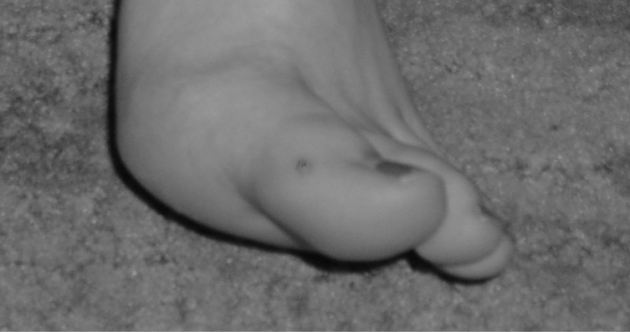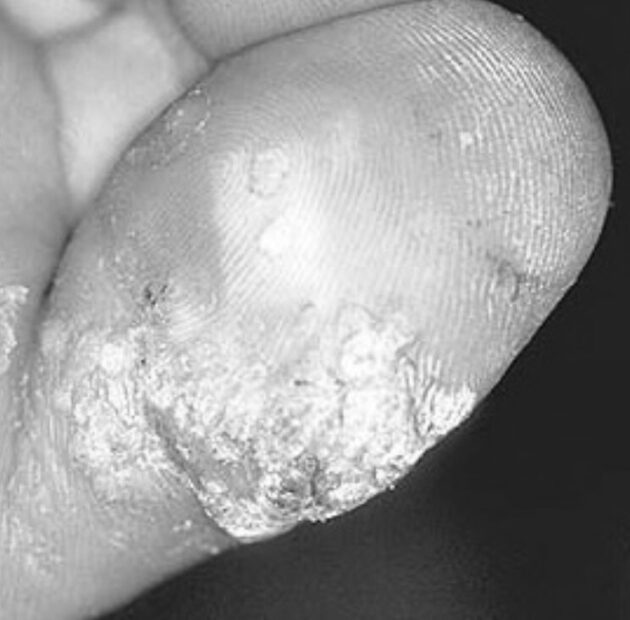What is a verruca?
Verrucas or plantar warts are caused by a virus. It is the same virus that causes warts on the hand.
They can be very small and spherical or cover a large surface area and have an uneven border (known as the mosaic virus). They often have an appearance resembling a cauliflower and may have numerous black pinhead dots between them. These dots are tiny blood vessels, which have been pushed to the surface and explain why verrucae can bleed easily.

You can identify a verruca by looking at the natural lines of your skin (similar to the lines that make up your fingerprints). These lines suddenly stop at the edge of the verruca.
Verrucas are infectious, so it may be a good idea to cover them when in communal areas such as swimming pools or changing rooms.
Treatment of verrucas
If the verruca is not troublesome or not hurting very much, the best treatment is not to do anything at all. Because they are a virus, the body’s natural defences will fight the virus and build up immunity. The natural life of a verruca is around two to five years and then they often disappear.
There are a number of treatments for verruca. Success rate differs between individuals, with some working for some people and not for others. Before starting any treatment, the affected area tends to build up a lot of callus (hard skin). This more commonly occurs when the verruca is on a pressure point such as beneath the big toe joint. It also contributes to discomfort or pain felt from the verruca. It is necessary, therefore, to gently file or pumice the area every four to seven days to keep this build up down.
It will also mean that the treatment has a better chance of success. There is medical evidence to show that simply covering the verruca with a waterproof plaster has the same effectiveness as any of the acid based treatments. Please note that all patients with diabetes should not begin any treatment without first consulting their GP or podiatrist.

Verruca ointment preparations
Always follow the instructions provided with these preparations. These products contain acid therefore they can burn the skin, so care must be taken in how you use them. If the area becomes painful, stop treating for a week or so, until it settles down again.
Cryotherapy or liquid nitrogen
Some podiatrists or GPs carry out this treatment. The treatment is applied via a probe, which freezes the verruca tissue and causes a blister, lifting the virus away from the healthy skin. It can be very painful and may take a few treatments, but is often the most successful.
Surgical removal
This is only considered if the verruca is very painful and is dependent on the individual’s medical circumstances.
Don't
- do not use sharp instruments such as razor blades to cut corns or hard skin.
- do not use corn paints or corn plasters which contain acid.
- do not use in-growing toenail paints as these contain acid.
Please note NHS podiatry does not offer long term treatment for stubborn verrucas. We may provide a short course of treatment if your verruca is painful.
Contact podiatry foot protection
Document control
- Document reference: DP2813/07.17.
- Date reviewed: April 2017.
Page last reviewed: January 21, 2025
Next review due: January 21, 2026
Problem with this page?
Please tell us about any problems you have found with this web page.
Report a problem